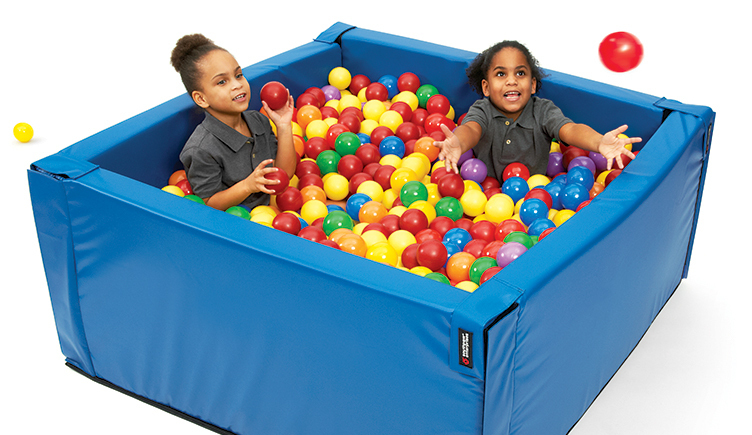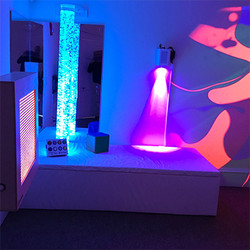I recently attended a symphony performance by an amazing orchestra. I entered the performance feeling stressed, but soon found myself relaxing to the soothing sounds. It was the “just right” sensory experience for me on that day. That calm feeling was a result of my environment, which is similar to what a student may experience in a sensory room.
Sensory rooms (sometimes called multi-sensory rooms) or sensory spaces are becoming more commonplace in schools. Sensory spaces may also be utilized in homes or therapy clinics. The environment is a safe place for students to explore and make their own choices. Successful interactions with the environment can regulate their sensory systems and increase self-confidence to support classroom participation. Sensory rooms improve classroom engagement and participation, decrease anxiety, and improve daily functioning.
Although the options are many, these are some of the core items to get a sensory room started.
Bubble Tubes are a preferred item for many students. With the bubbles’ changing colors and movement, the visual display and sound is soothing. Students can work on visual tracking and focus by watching the bubbles. Color changes can be made with a touch of the button.
Fiber optic curtains or sprays contain many strands of lights with changing colors. They are safe to touch, and stimulate the tactile and visual systems. They can be hung on a wall as a cascade or curtain. Students can also explore them while sitting on the floor, which allows the strands to be draped across their laps.
Projectors produce visuals that grab students’ attention. Many projectors allow for the option to change designs with replacement wheels. Some students may be able to make their own design choice.
Other items include large bean bags for relaxing. These are easy to find, and often classrooms are already equipped with a bean bag or two. Mattresses or “crash pads” are also great for relaxing, providing proprioceptive or vestibular input. Heavy-duty mattress covers can be purchased to enclose various-sized mattresses.
All sensory rooms benefit from a music option, particularly with a good sound system, if possible. A few other recommended items include noise-blocking headphones, fidgets, weighted blankets and vibrating pillows.
Although a designated sensory room is ideal, it may not be an option for every school. Using a corner or area of a classroom is a great option. For example, a classroom can start small by adding a small bubble tube, a fiber optic wand and a bean bag. Even a small space can make a big difference!
An added benefit of school sensory rooms is that staff experience the benefits themselves as they are accompanying the students, which reinforces the overall value of sensory supports and sensory spaces in the school. As with my experience at the symphony, we all use sensory stimulation to support regulation during our daily lives. A sensory room or space offers benefits that carry over into the school day, promoting engagement, participation, and a positive educational experience.



